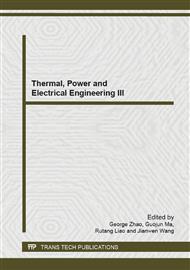p.229
p.234
p.240
p.245
p.249
p.254
p.258
p.262
p.270
Rheological Properties of Sodium Metatungstate in Aqueous Solutions
Abstract:
Sodium metatungstate (SMT) solution is an inorganic heavy liquid which is widely used in density fractionation. However, rheological properties of aqueous SMT solutions have never been fully researched. The objective of the present work was to study the rheological properties of aqueous SMT solutions and effects of temperature and density on the apparent viscosity. The steady flow experimental data was fitted using Herschel-Bulkley model. The results show that aqueous SMT solutions of different density are pseudoplastic fluids and the flow curves of SMT solutions were described by the Hershel-Bulkley equation. The apparent viscosity decreases monotonically with increasing temperature under the same density and increases exponentially with increasing density at the fixed temperature. Rheological properties of aqueous SMT solutions can be applied in the calculation of density fractionation efficiency and provides a theoretical basis for flow simulation.
Info:
Periodical:
Pages:
249-253
Citation:
Online since:
June 2014
Authors:
Price:
Сopyright:
© 2014 Trans Tech Publications Ltd. All Rights Reserved
Share:
Citation:


